The big cats are some of the most charismatic and recognized wildlife species on the planet. Lions and tigers are mascots, cartoon characters and nature documentary stars. Most of us know the basics of their life histories and conservation status.
But there are 40 species of wild cats on the planet, and you probably haven’t heard of most of them. Many of them are small, nocturnal and elusive. They often also face similar conservation issues to the big cats.
Conservationists often talk of protecting the world’s biodiversity, but much of that diversity remains unfamiliar – even with animals as familiar as felines.
Here are eight small, wild cats that, depending on where you live, may be unfamiliar. Let us know your favorite wild felines in the comments.
-
Black-footed Cat
Felis nigripes
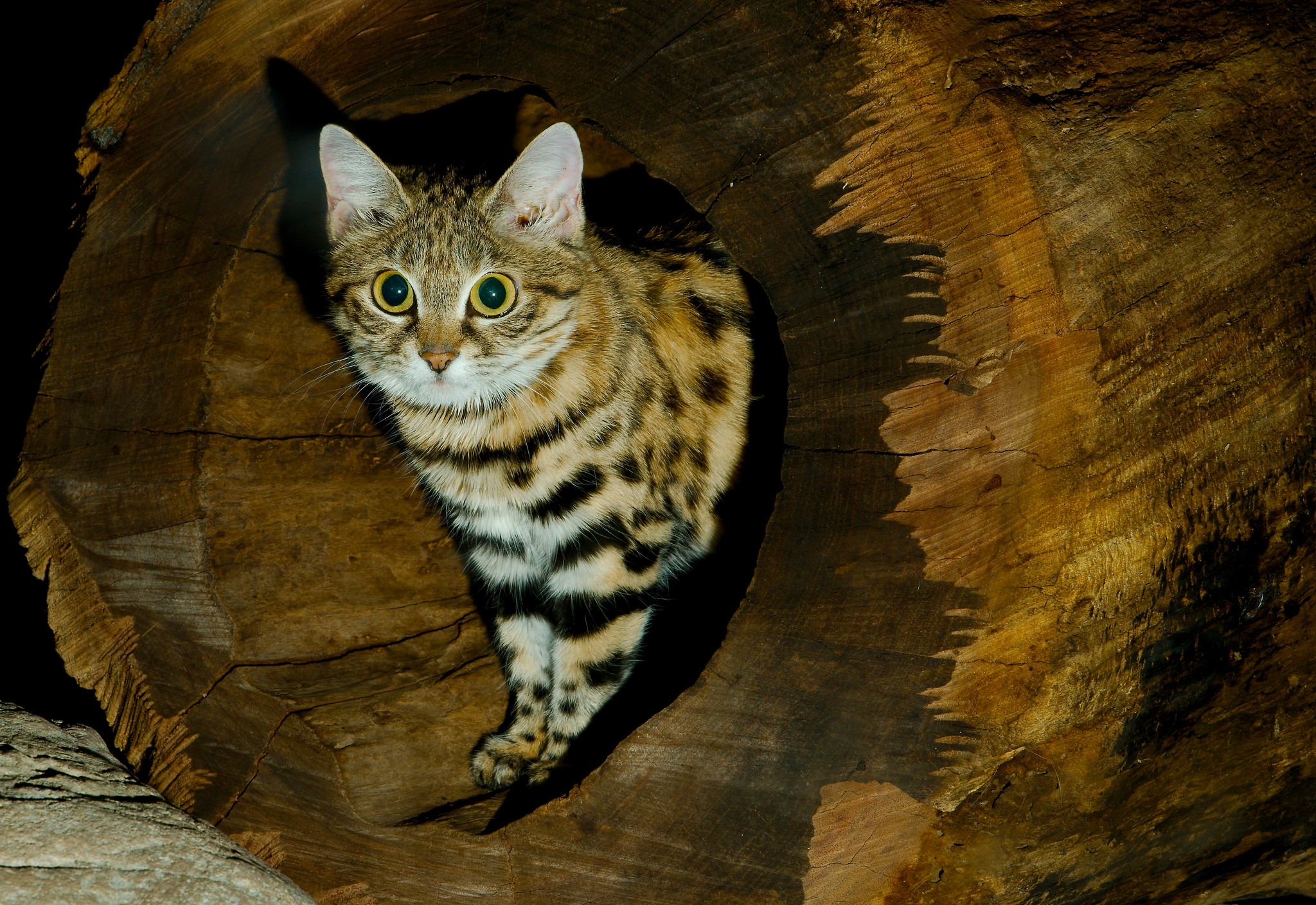
A captive black-footed cat. © Josh More / Flickr For most African safarigoers, seeing big cats – lions, leopards and cheetahs – is a highlight of the trip. But how about the smallest cat? That’s a much more difficult sighting.
The black-footed cat weighs only four pounds. It’s almost impossibly cute. And while it’s found in arid regions of South Africa, Namibia and Botswana (all popular safari destinations), it is nocturnal and quite rare.
Those who have seen big cats in the wild know that it is difficult to see them on the hunt. A lion spends a lot of time resting. Not so with the black-footed cat. According to Smithsonian, the black-footed cat “catches more prey in a single night than a leopard catches in six months.” In fact, its fast metabolism means that, at night, it is almost constantly hunting.
This habit means they can be reliably sighted on specialized night safaris in suitable habitat, particularly in the ranchlands around Kimberley, South Africa. I saw several black-footed cats there during night safaris that also provided views of aardvarks, Cape porcupines, hedgehogs and more.
-
Iberian Lynx
Lynx pardinus

An Iberian lynx. © Diego Delso / Wikimedia Commons Among North American nature lovers, Europe is often considered “less wild.” And yet, some of the most exciting wildlife conservation initiatives and successes have occurred there.
Take the Iberian lynx. In 2002, it was the most endangered wild cat on the planet, with a population of only 94 animals. Native to Spain and Portugal, the Iberian lynx had been in precipitous decline for decades. It had been persecuted relentlessly by farmers, and the lynx wasn’t legally protected until the 1970s. Its main prey, European rabbits, had a population crash due to a virus. The species had disappeared from Portugal, and many feared it would be the first cat species to go extinct in modern times.
Fast forward to today. Iberian lynx now number more than 1,000 animals. And while they still face dangers, it’s a dramatic comeback by any measure. The key is that conservationists took a comprehensive approach to their recovery. Key habitat was protected. Captive breeding augmented wild populations, an allowed reintroduction to Portugal (where some 150 lynx now roam). Rabbit populations were restored.
Where seeing a wild Iberian lynx was now a long shot, dedicated wildlife watchers now plan wildlife trips to Spain national parks to see them. Threats certainly remain, but the Iberian lynx serves as a bright spot for predator conservation.
-
Pallas’ Cat
Otocolobus manul
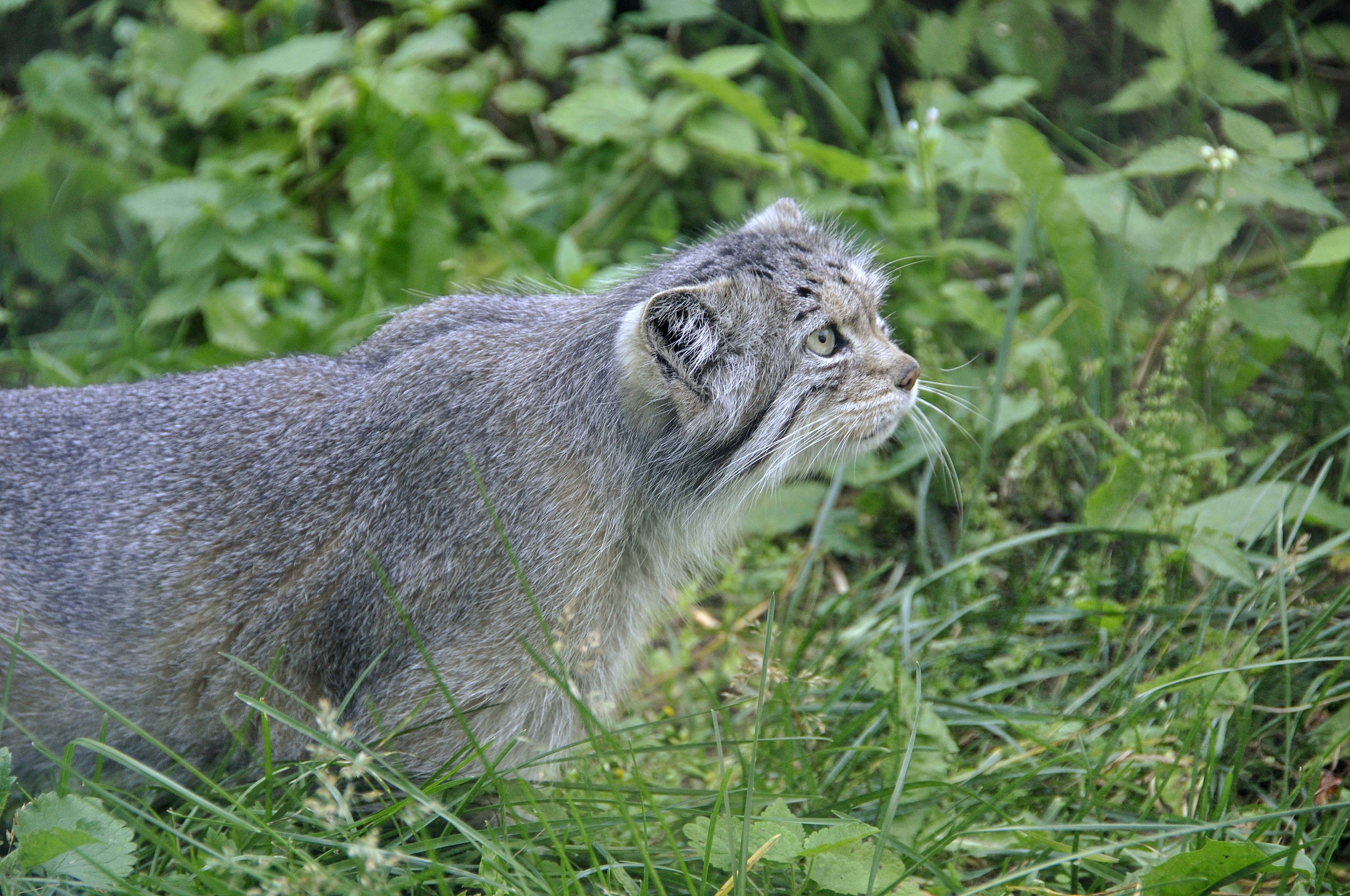
A Pallas’ cat. © Sini Merikallio / Wikimedia Commons The Pallas’s cat is probably best known from “grumpy cat” memes. This fluffy cat looks distinctly annoyed. That’s just human projecting, of course. The Pallas’s cat (also known as the manul) actually thrives in fairly difficult conditions (at least by human standards).
Pallas’s cats roam higher elevations of Central Asia, where they are solitary ambush predators. They are even out hunting when temperatures plunge to -40 degrees Fahrenheit. But Pallas’s cats thrive. They have the longest and densest fur of any cat. That fluffy coat makes them appear quite large, but it’s an illusion. They are actually no larger than a house cat.
They have small ears, which actually protects them from heat loss in frigid conditions. At lower elevations, their immune system is not equipped for the higher number of bacteria and viruses. This makes captive breeding at zoos and wildlife centers – which has been important in other cat conservation efforts – difficult.
-
Fishing Cat
Prionailurus viverrinus
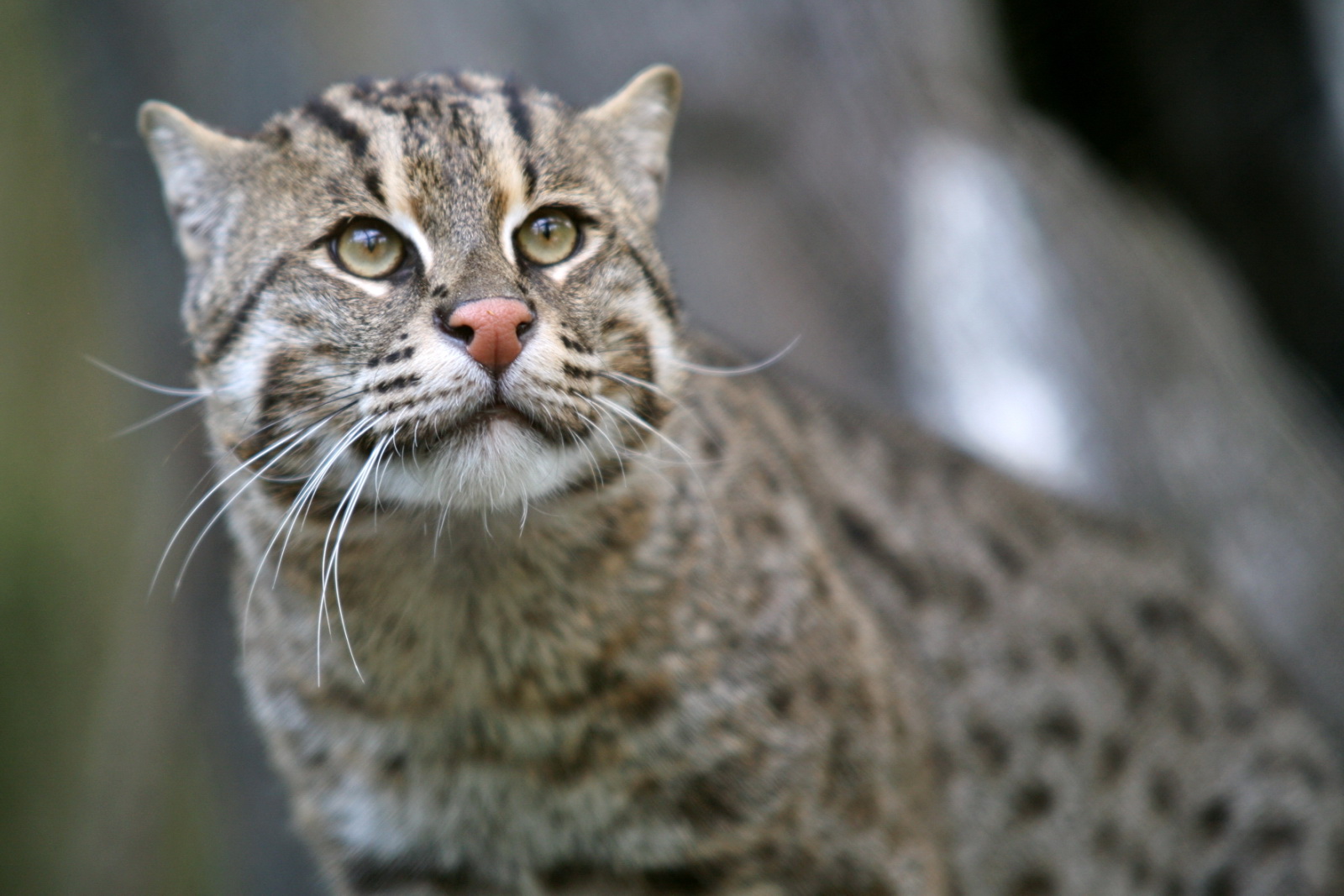
A fishing cat. © Cliff / Wikimedia Commons Most of us know that domestic cats don’t like water. And typical “common knowledge” is that of the wild cats, only the tiger is a swimmer. This is not true, as the next two cats on our list show.
The fishing cat of Southeast Asia is, as its name might suggest, often found near water. It’s a great swimmer, with webbed feet and claws that never fully retract – the better to snag underwater prey. And yes, fishing cats do catch fish, usually by standing along the edge of the water.
However, they are the quintessential generalists, also feeding on rodents, small birds and even livestock.
-
Flat-headed Cat
Prionailurus planiceps
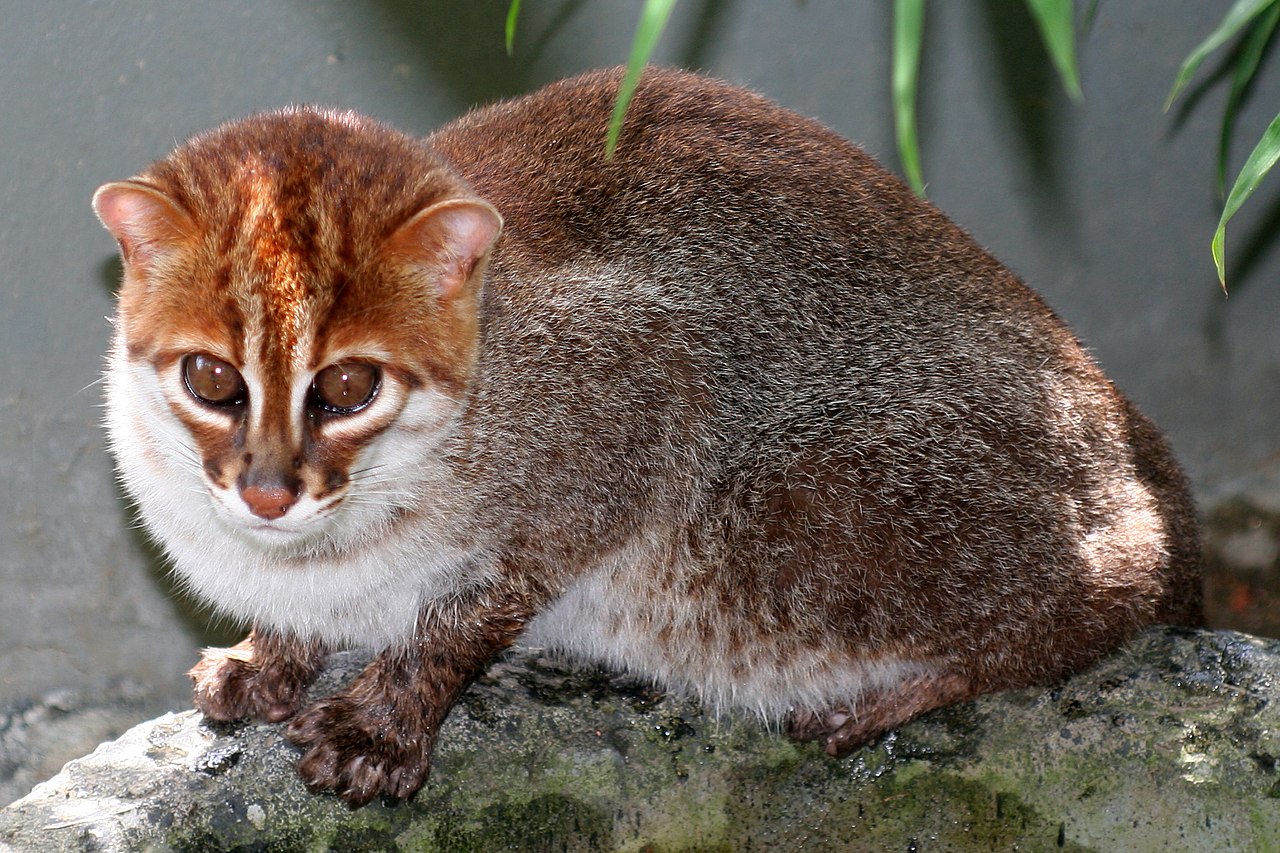
A flat-headed cat. © Jim Sanderson / Wikimedia Commons With its namesake flattened head and large eyes, the flat-headed cat kind of looks like someone took a lemur’s head and put it on a small cat’s body.
This is another Southeast Asian cat that is adapted to semi-aquatic habitats. It’s often found in wetlands, which are unfortunately often imperiled habitats. One study in Malaysia found that the flat-headed cats there were almost exclusively feeding on fish. Other studies have found that crustaceans and frogs also can be important parts of the diet, and they will eat a wide variety of terrestrial prey.
These and other small, Southeast Asian cats are often little studied and poorly known, and it’s clear their populations have declined. A growing number of traveling wildlife enthusiasts are making trips specifically to see wild felines, including the smaller and more cryptic species not usually seen on a typical safari. Perhaps these trips – which feature long nights, often in boats, searching for species like flat-headed cats – can help build more support for small cat conservation.
-
Oncilla
Leopardus tigrinus
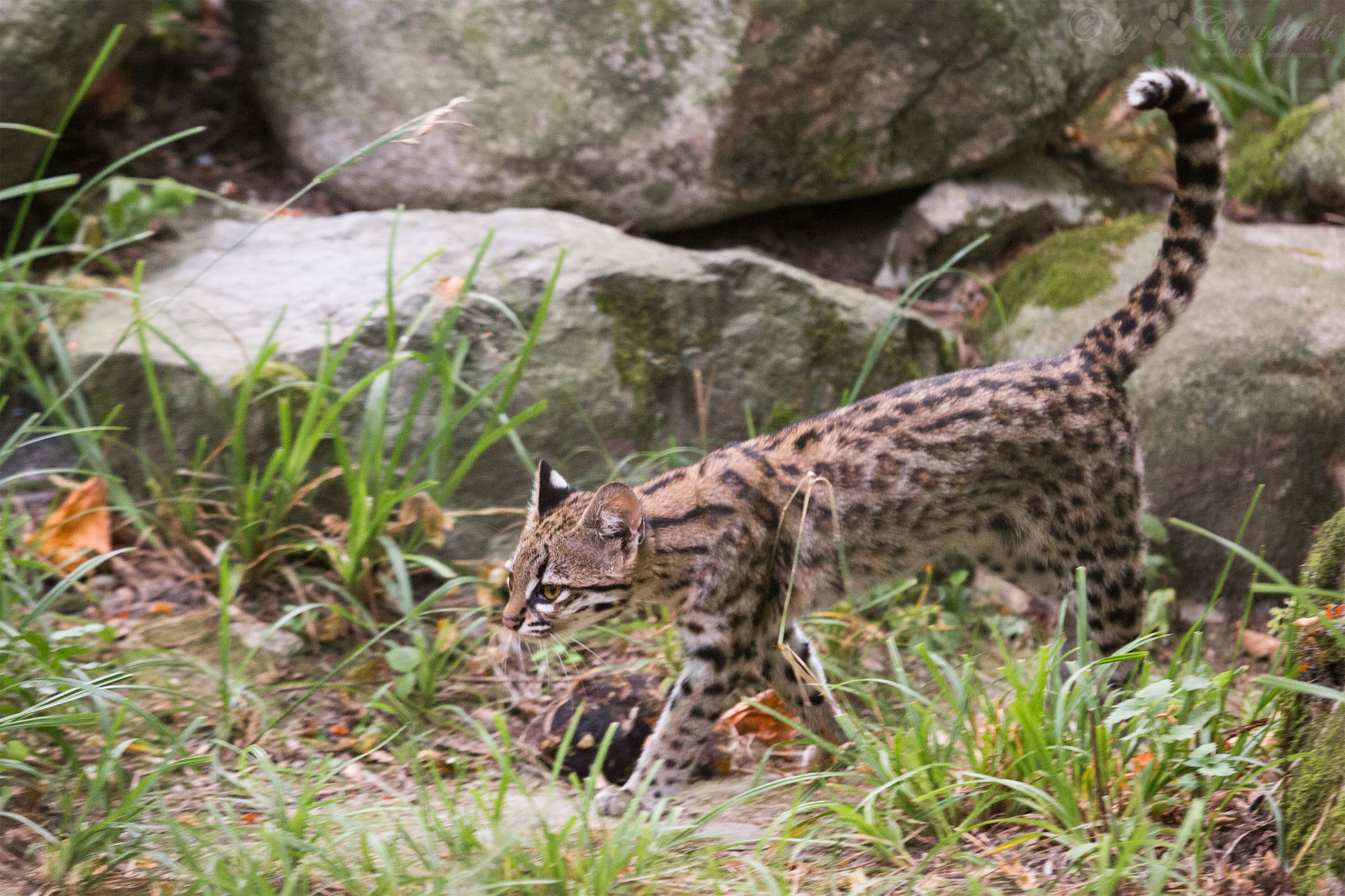
A captive oncilla. © Cloudtail the Snow Leopard / Flickr Central and South America are home to a number of wild, spotted cats, with the jaguar being the most widely known. But there are other, smaller examples. Telling these apart can be a challenge, but each has different spotting patterns.
The oncilla (sometimes called the tiger cat) is one of the smallest. It is found from Costa Rica to northern Argentina, often at higher elevations than other spotted cat species. It is also quite elusive and rare.
The Central American population, which may be a separate species, is particularly vulnerable. In recent years, there have been few documented oncillas in the wild in this region. A conservation effort, the Central America Oncilla Project, is using camera traps, community surveys and other methods to gather more information about this cryptic creature.
-
Geoffrey’s Cat
Leopardus geoffroyi
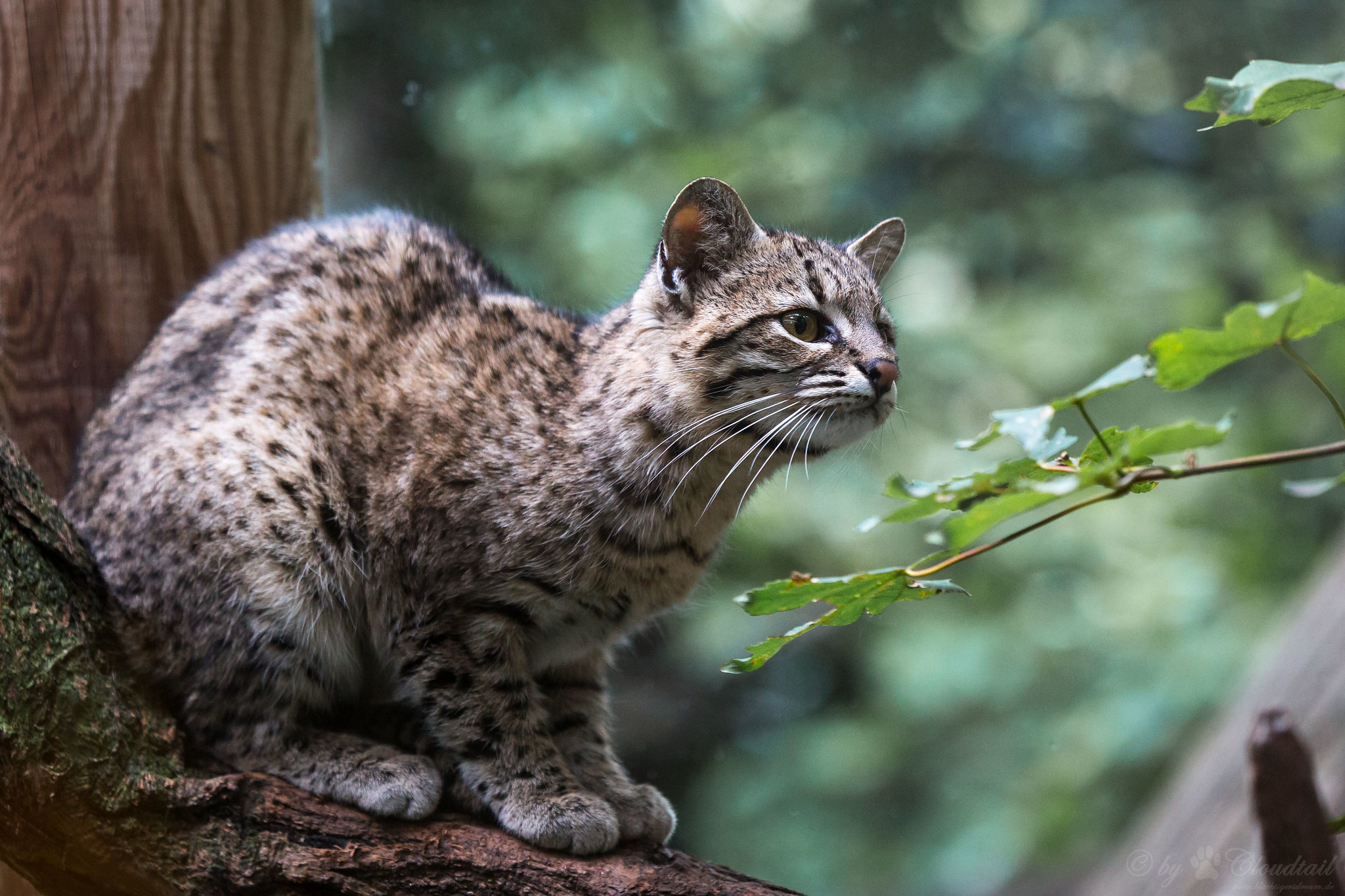
A captive Geoffrey’s cat. © Cloudtail the Snow Leopard / Flickr Another South American spotted cat, the Geoffrey’s cat ranges across the southern part of the continent. People often consider South American wild cats to be forest species, but that’s not always the case. Geoffrey’s cats are found in a wide variety of habitats, including marshland, arid steppe and even desert.
According to the Princeton Field Guide, Felids and Hyenas of the World, there is evidence that the Geoffrey’s cat may have actually benefited from habitat conversion. It does better in croplands than in the former subtropical forest. This cat is one of those generalist species that, given a bit of protection, seems to do just fine on working farms and ranches.
-
Jaguarundi
Herpailurus yagouaroundi
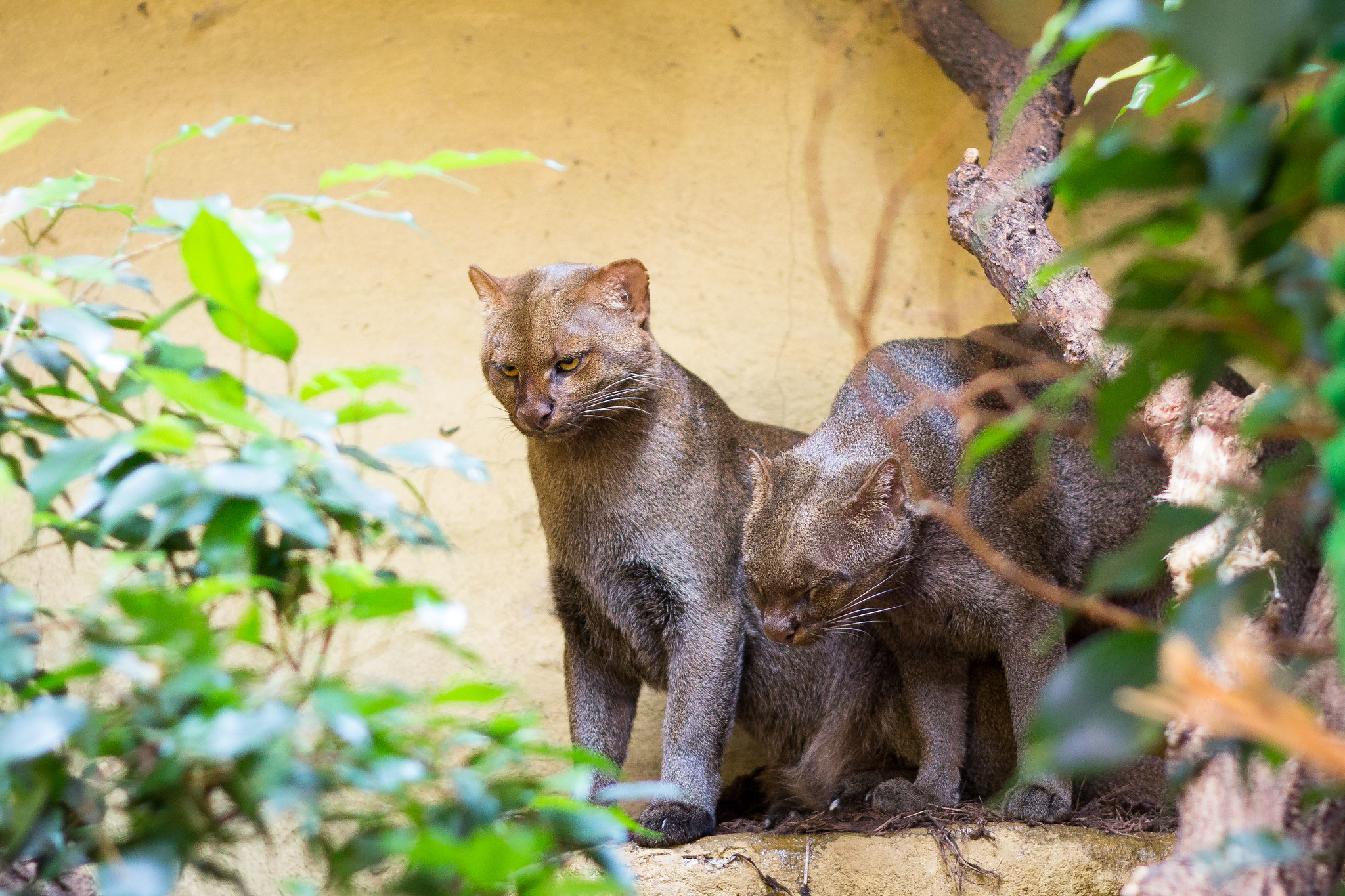
A captive jaguarundi. © Cloudtail the Snow Leopard / Flickr Many of our readers live in the United States, where the two most common wild felines are bobcats and mountain lions. Canada lynx are found in colder environments, and a small population of ocelots hangs on in South Texas. And from time to time, a jaguar is documented in Arizona along the United States/Mexico border.
But do you know the jaguarundi? With a name like this, it sounds like a spotted cat, but it’s coat is actually a uniform color – either a rusty brown or dark gray.
These cats used to live in the South Texas brush country, like the ocelot. The last confirmed sighting of one in Texas was in 1986, in Brownsville. As is the case with so many lost species, people report sightings of jaguarundis in Texas and Arizona each year. Some people are convinced they still roam in the United States.
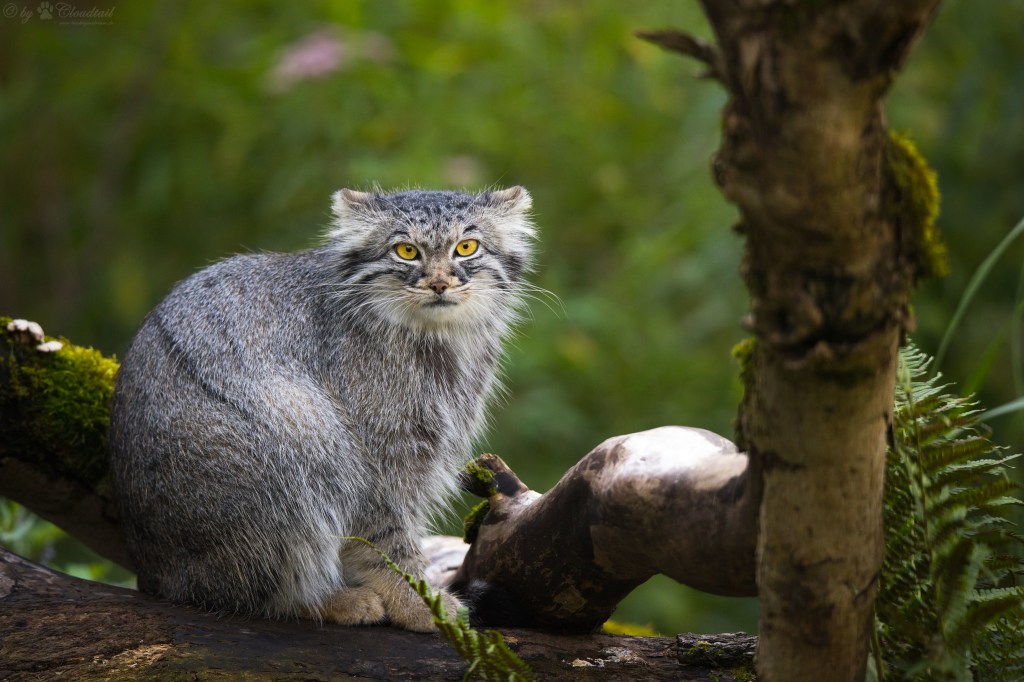



My favorite wild cat is the Clouded Leopard, with it’s 3D coat pattern and long canines. I love this animal!
Great article! As an ailurophile, I’ve known of these, but it was very intriguing to learn more about each one! Thank you for this treat!
Iberian lynx, Pallas’ Cat, Geoffrey’s cat & the Oncilla were all favorites from this article.
I really love this Cool Green Science!
Your article are tres cool!
Great article you need a Fishing Cat.
WOW!What a wondeful cats!
Laurens eagke killed a couple of Pallases cats in Mongolia— I have pics.
As far as oncillas and other such obscurities; i alway suspected that betsys “first breeding of margays in captivity’ was dubious not because she didnt have a real breeders touch (well; on public TV, in boston, notoriously in a more puritanical age “I just put the girl HERE and hold he r down, then i ‘d pick up the boy like THIS; and sort of STICK him on, and go like this!” but because she had two SPECIES she thought were just color phases.. see my photos again
I’d like to see a few more cats and other species. Roaming free, not necessarily where people/ranchers and the like, and a whole lot of less people. Anyway thank you for showing me these cats. I hope the best for them. And that they never need the thoughts and prayers of the Repubs.
Very cool post! I was on a photo safari in Tanzania in 2002, we were lucky to have spotted all five cat species. I don’t remember photographing all, but definitely lions, cheetahs, leopards and servals (Servals liked to hang out at Ndutu Lodge). I think the small cat we saw in the Ngorongoro Crater was called a Caracal.
Very cool cats, but what about the British wildcat? I was hoping that one would be mentioned. Thanks. https://www.wildlifetrusts.org/wildlife-explorer/mammals/wildcat
There are also Scottish wildcats, naturally in Scotland, though there are not many these days.
Scottish wildcats would make a great story in their own right. There are very few pure ones left. I recommend the book The Scottish Wildcat by Christopher Clegg for a comprehensive look at this animal. Derek Gow’s memoir Birds, Beasts and Bedlam has interesting stories of captive breeding and reintroduction of Scottish wildcats.
I saw captive Scottish wildcats at the excellent Edinburgh Zoo.
Thanks for writing.
Matt Miller
Cool Green Science editor
Jaguarundi, a rather small feline are or were just hanging on by their nails in the dune maritime forest and subtropical coastal forests along the Gulf Coast. This state ( Ala.) Remarkably enough was attempting to restrict human activity in the immediate maritime dune forests. With all the hurricanes of the last 30 yrs. One can only hope some are still here. Each time any species of anything is gone the whole world feels that void.
I appreciate this and it is the saddest thing in the world to think of any of them out of their habitat and into captivity. Saw a documentary about the Pallas cat and was really resentful that a person in the film had no consideration for one of these cats and insisted on pulling it out of its den just for the film. Not something Jane Goodall would do with any animal. And we have domestic cats abandoned constantly and now these cats also in the exotic pet market. Hope you agree this is a tragedy and condemn it as well.
My favourite cat is the clouded leopard. Such a handsome cat with perfect camouflage
Very cool cats, Matt! I was glad to see the jaguarundis at the end. Although they may sadly be about gone from the U.S., they are still one of the more common wild cats in parts of Central America. We were lucky enough to spot a pair much like the ones in the photo in southern Mexico’s Sian Ka’an Biosphere Reserve. Seems like a good candidate for reintroduction into the U.S. borderlands, especially as they are small enough to not be a threat to most livestock.